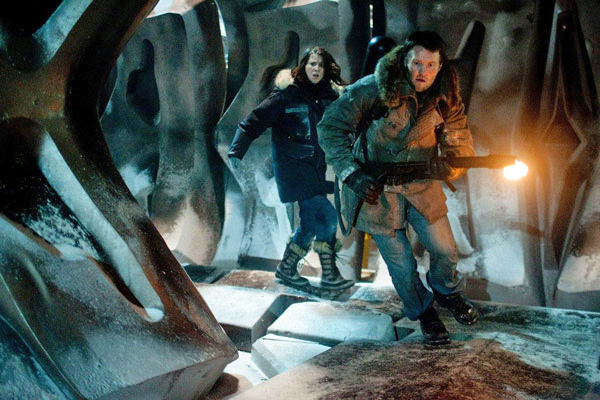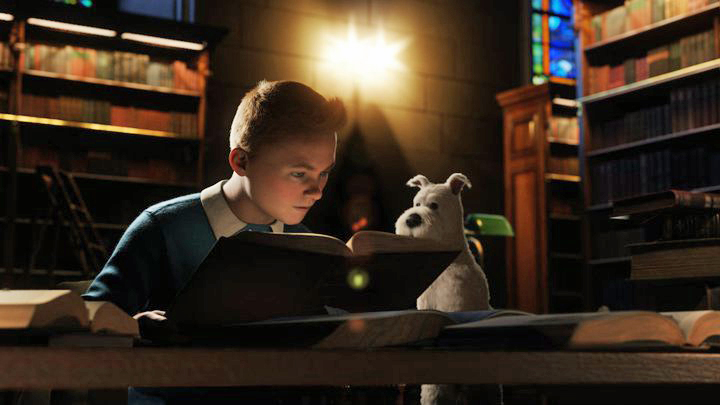Q. At the beginning of movies distributed by 20th Century Fox, the Fox logo is accompanied by music. It goes: Dut-da-da-daaa det-dit-det-det-dit-dit-det-dut-da-da-daaa Only sometimes the fanfare finishes with: Da-da-da-daaa da-da-da-daaaaa da-da-da—DAAAAAA (det-det-det-daaaa) My question is, what is the difference between movies that get the full treatment and movies that don’t get the big finish? This question has plagued me for years. (Norman Taylor, Plano, Texas)
A. A 20th Century-Fox spokesperson says: “The original music was written in 1934 by Alfred Newman for Daryl Zanuck’s newly formed production company, 20th Century Pictures. This fanfare was carried over when the company became 20th Century Fox Corp. in 1935. In 1954, a longer version of the fanfare was developed with an additional seven seconds of music, for films that were in Cinemascope. This version was first used for “The Robe.” As years went on, either one or the other was used until 1994; since then all films begin with the longer version.”
Q. There’s a new visual effect I’ve seen on television, and I don’t know how it’s done. It’s used in the Gap “Jump, Jive, an’ Wail” commercial, the Matchbox 20 “Real World” video, and the ABC “Two of a Kind” sitcom intro. The effect: You see a fixed shot of a motion-filled scene (people jumping, horses running, cereal pouring); the action suddenly freezes, with people or objects suspended in midair, and the scene rotates as if the camera is dollying around it; the camera stops moving and motion resumes. In some cases, an unfrozen person continuously moves in the scene as if time has stopped around him or her. The effect is startlingly good in the Gap ad. I’m guessing that two cameras are used, one each in the initial and final angles, and 3-D computer modeling is used to create the intermediate angles. (Chris Rowland, Plainsboro, NJ)
A. You are looking at VirtualCamera, a patented process devised a few years ago by Dayton Taylor. I wrote about it a year ago in Yahoo Internet Life magazine. Here’s how it works. Taylor places still cameras in a ring around his target event, and fires them all at once. Then he transfers the still images from each camera to motion picture film. When the film plays, our point of view circles the event, which is frozen in time. The technology to do this has been available since the invention of movies–but nobody ever thought of it, until Taylor did. He wrote me about the process soon after he first tested it, and I mentioned it to Steven Spielberg, who engaged in a correspondence with Taylor. Spielberg and I talked about what kind of a movie moment might be appropriate for VirtualCamera. Perhaps a great turning point, like the assassination of Lincoln or Gandhi, the death of Christ, or, obviously, anything new at The Gap. Taylor has an explanation and demo at www.virtualcamera.com/.
Q. I recently saw “Pleasantville” and enjoyed it. There was one perplexing element. Bud incites the mayor and through his provocation the man gains color. It is therefore assumed that anger is the cause of the mayor’s coloration. However, when the non-colored people are destroying Mr. Johnson’s maltshop and burning books, they are livid and yet unchanged. How could director Gary Ross overlook this loophole? (Joanna Campbell, Woodinville WA)
A. Gary Ross tells me: “The process by which b&w characters gain color is very random. That’s kinda the point of the movie, that you can’t tie the universe up in a bow. To me, people turn to color not out of passion, not out of feeling or depth of feeling, but when that thing that is missing is discovered and their potential becomes realized; the duality in their life is gone and they’re whole.”
Q. The TV advertisements for “Antz” include the line when Z says he doesn’t want to drink from the “caboose” of another creature. Yet, when I saw the movie in a theater, the word “caboose” was replaced with the word “anus.” Like so many other recent “family” movies, this one had to include an unnecessary gross-out joke. The word “caboose” is not only more “palatable,” but I think it sounds funnier anyway. So which word was in the original script? (Greg Anderson, Huntsville, Utah)
A. The line occurs as ants are drinking nectar from the anuses of aphids, which ants do all the time. I first learned of this ant gourmet behavior in high school biology class, where Mr. Dimmick never once, as I recall, found it necessary to use the word “caboose.” The word was switched in the TV ad because our society finds accurate scientific and medical terminology more offensive than hayseed euphemisms.
Q. I watch many movies on my television with the closed captioning turned on, and have noticed that what the characters say is often different from what is displayed on the screen. Does the closed captioning text come straight from the shooting script? If so, this would imply that the actors are improvising and adding to many of their lines. Or is it that the cc text is simply a truncated version of the script? (Ian Skinner, Victoria, B.C.)
A. I referred your question to Henry Kisor, book editor of the Chicago Sun-Times, whose memoir What’s That Pig Outdoors: A Memoir of Deafness is a modern classic. He replies: “Closed captioning in the movies is an art of compromises. Often it is impossible for the person doing the captioning to present the script verbatim. The actors may be speaking too rapidly, or speaking almost on top of one another, crowded also by sound and visual effects. In order for the captions to remain onscreen long enough for the average viewer to register and understand, they often must be foreshortened. Words and sometimes phrases are left out or otherwise altered. True, in some cases subtleties of language are lost in the compromises that need to be made. Captioners do use scripts, but they also follow the actual filmed dialogue. If the actors improvise, the captioners present the improvisations.”
Q. While I agree with your description of and complaints about what you term the “New Geek Cinema,” I was wondering how you chose the word “geek.” Traditionally, the word “geek” has been almost synonymous with “nerd,” evoking an image of a scrawny social outcast with greasy hair and bad hygiene. Lately, the term has been co-opted by techies who, pocket protectors or no, have succeeded in life by doing the same things that made them punching bags as kids. In its mildest form, “geek” now describes electronic gear-heads who speak mostly in model numbers (“I gotta couple twelve-hundreds and a 58 feeding my Rane; I can mix your 303 and 909 in with that”). What connotation of “geek” are you thinking of when you speak of these nouveau-Tarantino poseurs? (Ed Horch, Bridgewater, NJ)
A. The word “geek” has its origins in carnival sideshows, where it referred to the man who did disgusting things like biting the heads off of live chickens. Imagine him wearing a pocket protector, and you’ve got it.
Q. I am confused about the title to the upcoming film “I Still Know What You Did Last Summer.” Technically, shouldn’t it be called “I Still Know What You Did The Summer Before Last?” After all, the hit and run incident happened not last summer, but the previous one before. (Travis Eddings, Fayetteville, AR)
A. An excellent insight. And while we’re at it, shouldn’t “The Other Side of the Mountain, Part 2” have been titled “This Side of the Mountain?”











